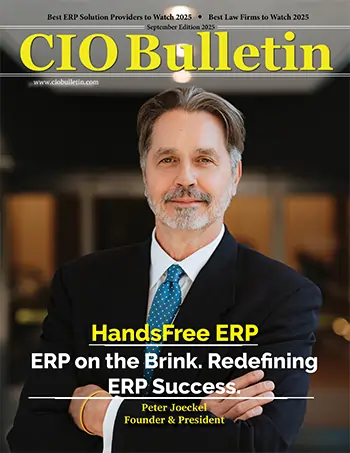Home Industry Banking and finance Private Lenders Driving Consum...
Banking And Finance

CIO Bulletin
03 October, 2025
In 2025, traditional financing continues to feel the weight of regulation, increasing risk aversion, and rising borrower expectations. At the same time, private lenders have quietly expanded their reach. They’re no longer a niche solution for hard-to-place loans. Instead, they’ve become essential to liquidity, helping both consumers and businesses stay operational, scale faster, and avoid missed opportunities.
From fast approvals to flexible underwriting, these nonbank lenders now account for a growing portion of credit issued in the United States. Their presence is especially felt in underserved areas, seasonal business hubs, and among gig-economy professionals who don’t always qualify for finance offered by legacy financial institutions.
This is changing, in large part due to private lenders, who once operated in the shadows of mainstream finance. Today, these lenders power a sizable portion of everyday transactions and investments.
As inflationary pressure eases but borrowing demand remains high, the agility of private lenders helps fill funding gaps that banks cannot or will not address.
Borrowers in 2025 face a familiar problem with new urgency. Banks remain cautious, and credit unions are slow-moving. Loan decisions often hinge on narrow criteria, leaving many qualified applicants without access to needed capital. In this environment, private lenders offer a lifeline. Their funding supports everything from urgent home repairs to rapid inventory restocks.
For consumers, the appeal lies in simplicity. Applications take minutes, not days. Verification often prioritizes recent income activity over outdated credit reports. A single missed payment in 2021 no longer defines a borrower’s creditworthiness in 2025.
For businesses, speed matters even more. Whether covering payroll after a delayed payment or purchasing stock ahead of a seasonal rush, access to funding can mean the difference between growth and contraction. It’s also noteworthy that private funding often delivers in 24 to 72 hours, bypassing the red tape that still bogs down traditional lines of credit.
Private lenders in 2025 no longer offer one-size-fits-all solutions. Their products are tailored to fit specific borrower needs, income types, and transaction goals.
Private lenders increasingly design loan products tailored to specific borrower challenges. A personal loan for appliance repair, for example, differs vastly from a revolving credit line for inventory purchases.
This customization empowers borrowers with solutions that fit their needs while providing lenders with clear, targeted repayment terms.
The buy-now-pay-later (BNPL) model has evolved beyond retail purchases. In 2025, private lenders are offering BNPL solutions for a wider range of everyday needs, including dental care, professional courses, and various personal services. This shift reflects growing borrower demand for flexible, interest-free, or low-interest payment plans as alternatives to credit cards.
Income-based underwriting lets lenders assess real-time earnings. Daily repayments sync with platform payouts, making loans more accessible and forgiving.
These setups adapt to variable income. Borrowers repay only when money comes in, reducing pressure and lowering missed payment risk.
Certain industries are now built around private capital. Construction subcontractors frequently use short-term loans to bridge receivables. Healthcare providers offer patients installment plans funded by third parties. Educational platforms provide course financing options through embedded loan offers.
In agriculture, ranchers and growers turn to private financing for equipment upgrades and seed purchases. Repayment can be tied to harvest season or market pricing, making it more flexible than bank loans with rigid due dates.
This deep sectoral reach signals that private lenders are no longer fringe participants but essential players in economic stability and flow.
Small businesses, particularly those outside major metros, increasingly rely on private capital. Local restaurants, boutique retailers, and service providers often struggle to qualify for SBA loans or lines from national banks. Requirements around documentation, collateral, or operational history create unnecessary friction.
Private lenders meet these businesses where they are. Loan packages adjust for seasonal income, and repayment terms can be optimized for slow months. In exchange, lenders charge slightly higher interest, but offer immediate access and custom terms. The tradeoff suits owners who value timing over cost.
This agility has also sparked a rise in revenue-based financing. Rather than fixed payments, businesses agree to share a percentage of their daily or weekly earnings. This aligns repayment with business health, reducing the risk of default during lean periods.
Digital infrastructure plays a central role in the private lending boom. Many lenders now use proprietary algorithms to assess borrower potential. Instead of pulling a basic credit report, they review bank feeds, gig platform data, and even invoice histories. This real-time decision-making dramatically shortens the underwriting process.
Borrowers benefit from mobile-friendly platforms with clear disclosures, instant estimates, and live support. They can compare loan options, upload documentation, and receive funding without leaving their screen. Automation removes bottlenecks that used to require days of human review.
For businesses, integrations with point-of-sale systems and inventory management software make private lending nearly invisible. Owners can receive offers based on performance data without even applying. Lending becomes proactive, not reactive.
While private lenders operate outside the full scope of federal bank regulation, 2025 has seen greater oversight to ensure borrower fairness. New transparency standards require all costs, terms, and penalties to be disclosed clearly. This legislative nudge hasn’t slowed growth but has improved borrower trust.
Some states now require licensing for private business lenders, adding layers of consumer protection while legitimizing the market. These changes have reduced predatory practices without hampering access. As private lenders improve compliance tools and legal frameworks, the perception gap between them and traditional institutions continues to narrow.
Borrowers increasingly view private options not as a last resort, but as a first step, especially when the speed and personalization outweigh legacy perks.
As financial ecosystems mature, partnerships between private lenders and platforms will continue to expand. Payment providers, accounting tools, and retail marketplaces are beginning to integrate lending directly. This embedded finance model allows businesses and consumers to borrow exactly when and where they need capital.
In this new reality, where private lenders thrive, the borrower finally has options that match the pace of modern life.







